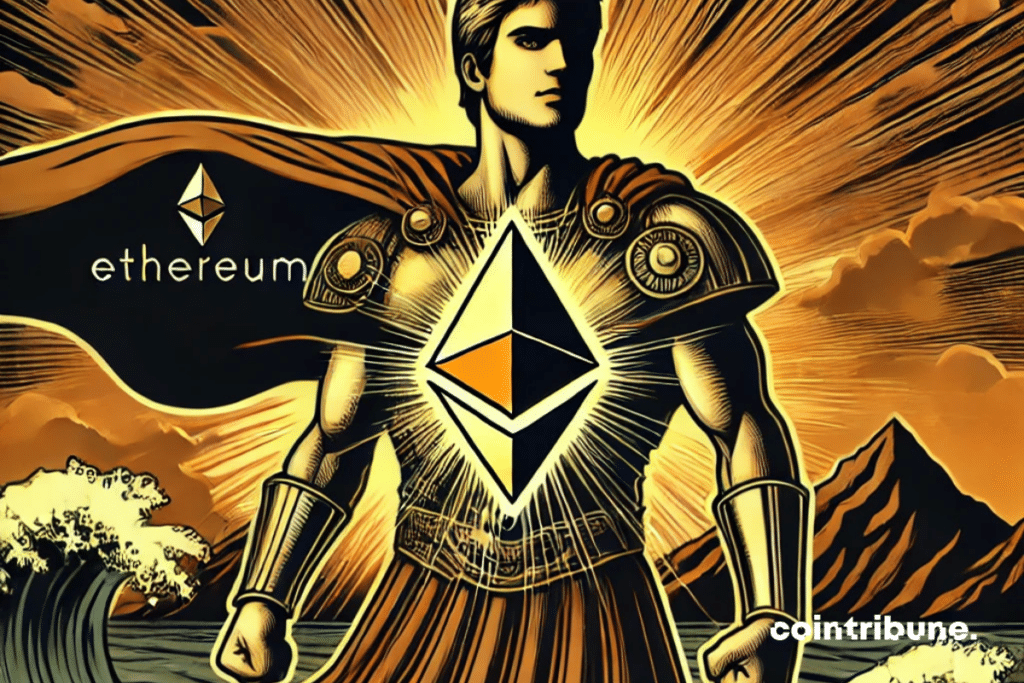Celebrating 11 years of Ethereum : Innovations and upcoming challenges
Eleven years ago, a nineteen-year-old developer named Vitalik Buterin published a document that would shake the foundations of blockchain technology. This “White Paper” of Ethereum, first appeared in November 2013, laid the groundwork for a new era of finance and decentralization. Much more than just a simple extension of Bitcoin, Ethereum proposed an innovative vision: a programmable ecosystem that allows autonomous applications to operate without intermediaries. Today, as this document celebrates its 11th anniversary, it is crucial to revisit the colossal impact of this initiative, its successes, and the challenges that still await it in a perpetually changing sector.

A decade of innovations driven by Ethereum
In 2013, the concept of smart contracts proposed by Vitalik Buterin in the Ethereum White Paper opened new perspectives in the crypto world. This document, designed as an extension of Satoshi Nakamoto’s initial ideas for Bitcoin, introduced the possibility of creating autonomous and executable contracts on a blockchain. “Ethereum was not just a crypto; it was a decentralized platform, a revolution for the digital economy,” noted James Wo, CEO of Digital Finance Group (DFG). Today, decentralized finance (DeFi) applications such as lending, yield farming, and decentralized exchanges represent a major alternative to traditional banking systems. According to data from DefiLlama, over $32.8 billion is currently locked in DeFi protocols operating on Ethereum, confirming the growing importance of this technology.
In addition to its financial impact, Ethereum has allowed diverse industries to benefit from innovative solutions. The travel sector, for example, has been able to integrate smart contracts to simplify its payment and ticketing processes. Pablo Castillo, CTO of Chain4Travel, emphasizes that “smart contracts fill a significant gap in industries like tourism, where transactions often rely on multiple APIs without a single source of truth. With Ethereum, manual operations are optimized, making the user experience smoother.” This ability of Ethereum to redefine standards across several sectors illustrates the central role it plays within the current blockchain ecosystem.
Towards institutional adoption and the challenges of interoperability
Although Ethereum has marked the history of blockchain and transformed finance, several technical challenges still hinder its full adoption. The issue of interoperability between blockchains remains a major concern. Thus, the fragmented nature of blockchain networks complicates the user experience, making asset transfers expensive and potentially risky. “For users, transitioning from one blockchain to another is a real challenge. This limits the adoption and ease of use one might expect from a decentralized technology,” explains Pablo Castillo. According to him, solving these interoperability issues will be essential to consolidate Ethereum as a “fundamental infrastructure layer” for the decades to come.
The future prospects of Ethereum also revolve around increased adoption by institutions. Alex Mizrahi, co-founder of Chromia, anticipates an acceleration in institutional adoption over the next ten years: “I foresee only an acceleration of this trend, with Ethereum as the foundation of the blockchain industry and more widespread use cases.” However, to attract mass users, strengthening security measures becomes imperative. Eskil Tsu from GoPlus reminds us that current vulnerabilities and the rise in cyberattacks pose an obstacle to widespread adoption: “The next ten years will require robust protection and enhanced education to ensure user security.”
As it approaches its 11th anniversary, Ethereum is preparing to face new challenges to remain at the forefront of blockchain innovation. The coming years will be decisive for the platform, both technically, with improvements in interoperability and security, and strategically, with growing institutional adoption. If Ethereum manages to consolidate its role as infrastructure, it could well establish itself as a crucial pillar for a billion users and become the foundation of a truly decentralized and secure economy.
Maximize your Cointribune experience with our "Read to Earn" program! For every article you read, earn points and access exclusive rewards. Sign up now and start earning benefits.
Diplômé de Sciences Po Toulouse et titulaire d'une certification consultant blockchain délivrée par Alyra, j'ai rejoint l'aventure Cointribune en 2019. Convaincu du potentiel de la blockchain pour transformer de nombreux secteurs de l'économie, j'ai pris l'engagement de sensibiliser et d'informer le grand public sur cet écosystème en constante évolution. Mon objectif est de permettre à chacun de mieux comprendre la blockchain et de saisir les opportunités qu'elle offre. Je m'efforce chaque jour de fournir une analyse objective de l'actualité, de décrypter les tendances du marché, de relayer les dernières innovations technologiques et de mettre en perspective les enjeux économiques et sociétaux de cette révolution en marche.
The views, thoughts, and opinions expressed in this article belong solely to the author, and should not be taken as investment advice. Do your own research before taking any investment decisions.